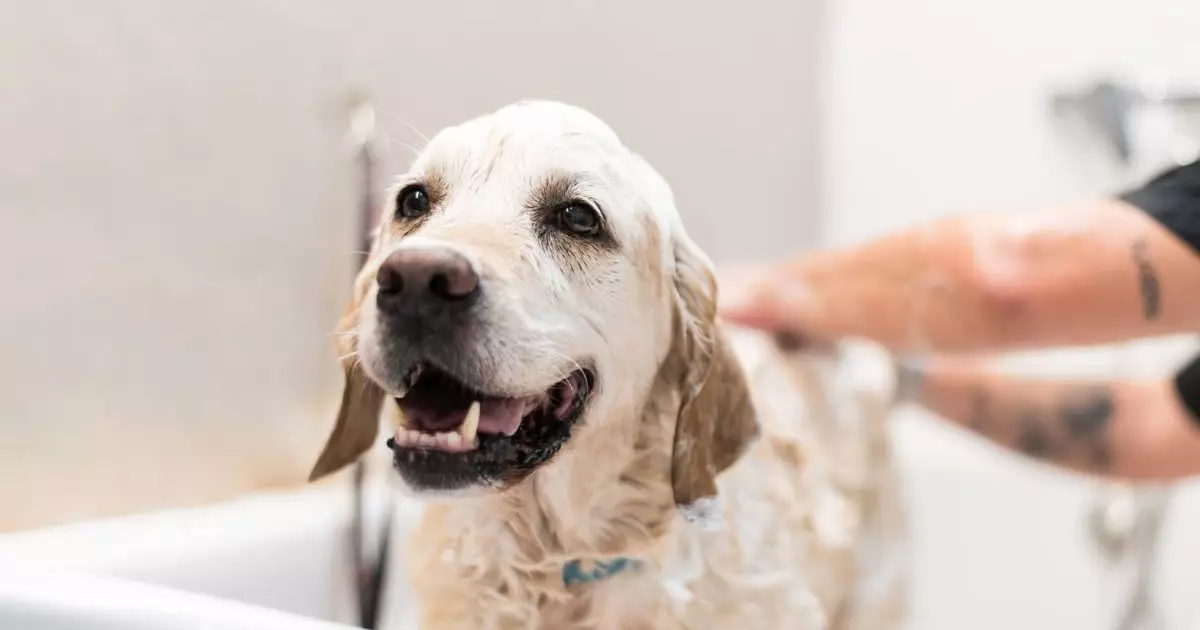Bathing your dog is an essential component of pet ownership that often comes with its fair share of challenges. While the experience can be daunting for both the pet and the owner, understanding the necessity of regular baths and learning effective techniques can transform the process into a more enjoyable one. This article delves into the reasons dogs need baths, how often they should bathe, and practical tips to ensure a smooth washing experience.
Dogs, unlike humans, have different grooming needs, but that doesn’t negate the need for regular baths. Bathing plays a vital role in maintaining a dog’s health, keeping their skin free from irritants, and contributing to their overall comfort. The primary benefits of bathing your dog include the removal of dirt and parasites such as fleas and ticks that can cause discomfort and health issues. Beyond hygiene, a clean dog is generally more pleasant to be around. A whiff of that ‘doggy smell’ can be an indicator that it’s time for a bath, but this can also vary based on breed, activity level, and environment.
The frequency of bathing your dog can vary considerably based on several factors, including the breed, coat type, and lifestyle of your dog. As a general rule of thumb, most dogs benefit from a bath once a month. However, the following guidelines based on specific needs can help:
1. Coat Type: Breeds like Basset Hounds with oily coats might require weekly baths to maintain their skin health. Conversely, dogs with water-resistant coats, such as Golden Retrievers, should be bathed less frequently to retain their natural oils.
2. Lifestyle: Dogs who play outdoors, dive into mud puddles, or seem to attract dirt may need more frequent baths than those living more sedentary lifestyles. Owners should keep an eye on their pet’s activity level—if they love getting dirty, regular baths may be necessary.
3. Personal Hygiene: Some dogs, like Basenjis, are known for their cleanliness and may rarely need a bath unless they have been particularly dirty.
It’s crucial to find a balance; bathing too often can strip your dog’s coat of natural oils, leading to dry skin and various irritants. Always consult your veterinarian for personalized recommendations based on your dog’s needs.
Successfully bathing your dog at home requires preparation and patience. Here are some practical tips to help you through the process:
– Pre-Bath Prep: Brush your dog’s coat before entering the bathing area. This removes tangles and loose fur, which can trap water and create skin irritation.
– Water Temperature: Always use lukewarm water. Just like infants, dogs have sensitive skin that can be easily burned by hot water. Ensure the temperature is comfortable for your furry friend to avoid dread or discomfort.
– Choosing the Right Shampoo: Opt for shampoos specifically formulated for dogs. Human shampoos can be too harsh and may alter the natural pH balance of their skin.
– Rinse Thoroughly: It’s essential to rinse out all the shampoo to prevent any skin irritations post-bath— a clean rinse is necessary for skin health.
– Drying Your Dog Safely: After rinsing, allow your dog to air dry or utilize a pet-safe dryer. Avoid hot blow-dryers, as they can irritate the skin.
– Rewarding Good Behavior: Make bath time a positive experience by offering treats, praise, or toys during and after the bath. Developing a routine where bath time ends with something enjoyable can help your dog associate baths with positive experiences.
For many dog owners, the task of bathing can seem overwhelming, particularly for larger breeds or dogs with complex grooming needs. If bath time is a struggle or if your dog has a coat that requires extensive grooming, consider hiring a professional groomer. They possess the skills and tools necessary to handle various breeds and their specific needs. Furthermore, regular grooming services can also include nail clippings, ear cleaning, and specialized trims, relieving pet owners of some of the more intricate grooming tasks.
While bathing your dog may be a task on a pet owner’s to-do list that is often met with resistance, it’s crucial for the health and hygiene of your furry friend. By understanding their needs, following proper techniques, and knowing when to seek help, bath time can become a manageable and even enjoyable experience for both of you.

